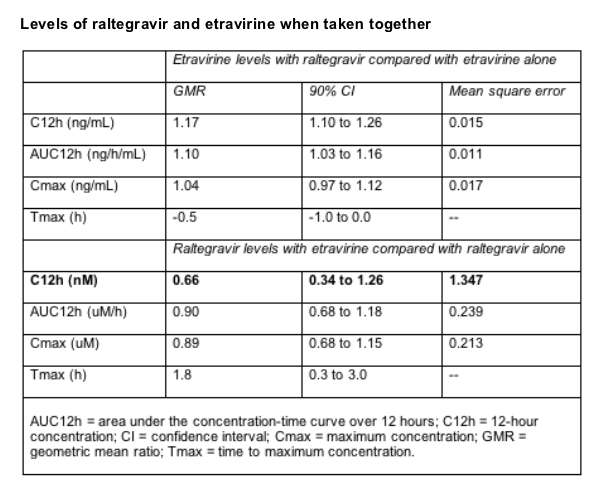 |
 |
 |
| |
Integrase Inhibitor Troughs One Third Lower With NNRTI Etravirine
|
| |
| |
4th IAS Conference on HIV Pathogenesis, Treatment, and Prevention
July 22-25, 2007
Sydney, Australia
Mark Mascolini
Twelve-hour trough concentrations of the integrase inhibitor raltegravir proved 34% lower when taken with the nonnucleoside (NNRTI) etravirine by healthy volunteers [1]. Investigators from Merck and Tibotec, who make these two investigational antiretrovirals, judged that this deficit does not call for a dose adjustment if the two drugs are taken together. Cotreatment with raltegravir and etravirine seems likely for many people with highly resistant virus, if both drugs get licensed.
Because etravirine induces expression of uridine diphosphate glucuronyl transferase, which raltegravir depends on for its metabolism, codosing the two drugs could in theory speed up raltegravir metabolism enough to lower levels of this integrase inhibitor. To test this possibility, Merck and Tibotec recruited 20 healthy volunteers and gave them raltegravir with or without etravirine in a three-period protocol:
- Period 1: 4 days of raltegravir at 400 mg every 12 hours followed by 2 or more weeks with no drug
- Period 2: 8 days of etravirine at 200 mg every 12 hours
- Period 3: 4 days of continued etravirine plus raltegravir at 400 mg every 12 hours
The 13 men and 7 women volunteers averaged 30 years in age. The men's median weight was 82.4 kg and the women's 71.0 kg (overall median 78.5 kg).
Raltegravir hardly affected levels of etravirine, and etravirine had minimal impact on the 12-hour area under the concentration-time curve (AUC) or the maximum concentration of raltegravir (Table). But the nonnucleoside cut raltegravir's 12-hour concentration, or trough, by about one third (Table).

Although the researchers figured that a 34% lower raltegravir trough with etravirine than without it should not necessitate a dose adjustment, the 90% confidence interval around that trough (0.34 to 1.26) indicates wide trough variability from person to person, not an unusual finding in these kinds of studies. Still, the reported variability means raltegravir troughs fell up to two thirds lower with etravirine than without it in a few people, and for those few people one would have less confidence saying the change lacks clinical meaning.
No serious side effects emerged in these healthy people during this short study. But 16 of the 20 people had a total of 44 grade 1 or 2 problems. Researchers rated 21 of these "adverse events" as related to either raltegravir or etravirine. The researchers reported no lab abnormalities.
Reference
1. Anderson MS, Kakuda TN, Miller JL, et al. Pharmacokinetic evaluation of non-nucleoside reverse transcriptase inhibitor TMC125 and integrase inhibitor raltegravir in healthy volunteers. 4th IAS Conference on HIV Pathogenesis, Treatment, and Prevention. July 22-25, 2007. Sydney. Abstract TUPDB02.
|
| |
|
 |
 |
|
|